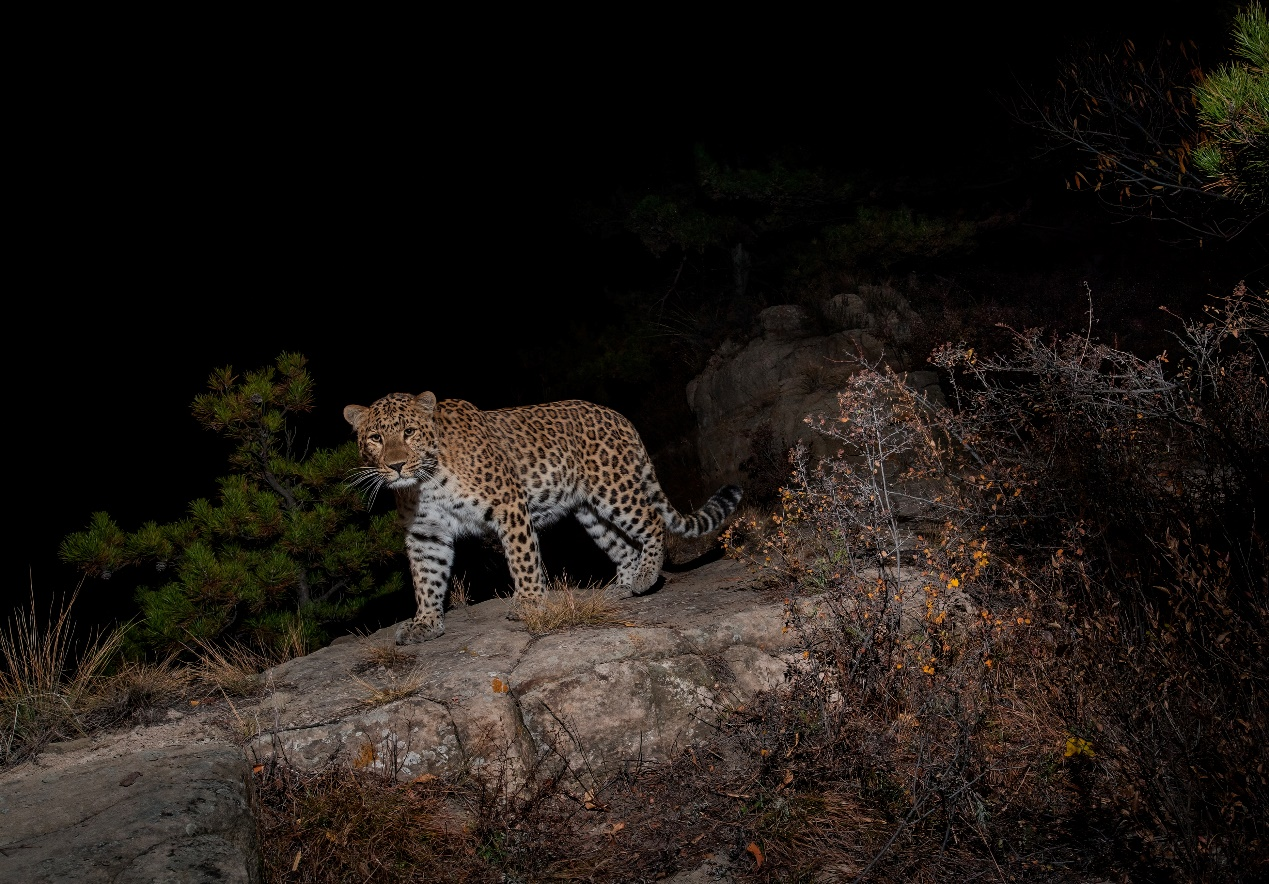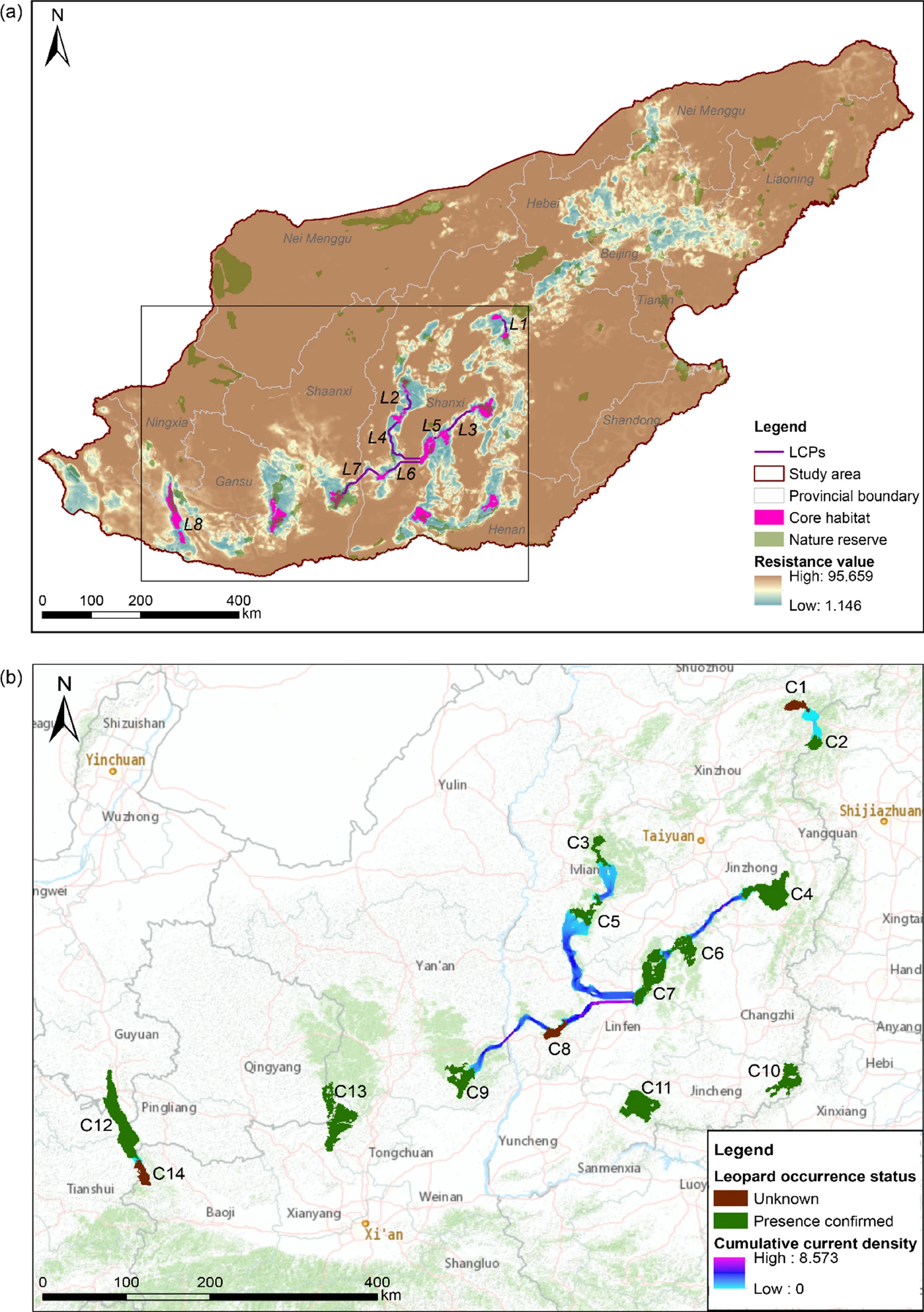Tracing the pawsteps of the North China leopard
May 14, 2024
Peking University, May 14, 2024: The North China leopard (Panthera pardus japonensis), one of the world's nine subspecies of leopards, is endemic to China and mainly distributed in the northern parts of the nation. Due to human activities, the species has undergone substantial range contraction and population decline. (*A species range is the area where a particular species can be found.)
To help protect the endangered big cat and inform its future conservation planning, researchers at Peking University's School of Life Sciences with collaborators mapped the animal's suitable habitats and examined the connectivity between its core habitats. Their findings have been recently published in Landscape Ecology, titled "Big cats persisting in human-dominated landscape: Habitat suitability and connectivity of leopards in central North China".
Fig. The study area and the occurrence locations (N = 196) of North China leopard in North China (2014–2020). The global human modification (GHM) index (map background) is from Kennedy et al.
Why it matters:
The North China leopard is crucial to the ecosystem in North China as it is an apex predator and the only large carnivore in the area. Due to hunting and habitat loss, its population has been dwindling, with a total population of less than 400, according to statistics.
The North China leopard is categorized as Critically Endangered (CR) on the IUCN Red List and Endangered (EN) on the China Red List.
Previous studies have shown that the species has been sustained at several sites in northern China, suggesting the potential for restoring the species in the human-dominated landscapes across this vast area.
Fig. Habitat connectivity between core habitats (a) and pinch points identified across the potential corridors (b). LCPs: least-cost pathways. Black numbers in Fig. 4a and Fig. 4b indicate the ID of the potential corridors and core habitats, respectively. The insert map in Fig. 4a is enlarged as Fig. 4b to show the details of the pinch points across the potential corridors. The base map in Fig. 4b is from ESRI, where the light green patches indicate continuous forests
Key Findings:
The study shows that the North China leopard prefers locations with higher altitudes, higher humidity, and a lower human presence.
The habitats of the big cat are highly fragmented, with the research identifying 14 habitats totaling 6,933 square kilometers and 8 potential diffusion corridors totaling 57.22 kilometers. The main core habitats are located in Shanxi, Shaanxi, and the border between Gansu and Ningxia provinces.
The research concludes that the fragmentation of the North China leopard habitats is severe, and the connections between different habitats are weak.
Suggestions:
Based on the research, it is advised to strengthen cooperation between different protected areas and administrative districts.
Surveillance of the leopard species should also be strengthened to find ways to improve the connectivity between different habitats and the effectiveness of corridors.
Link to the paper: https://link.springer.com/article/10.1007/s10980-024-01896-y
*This article is featured in PKU News' "Why It Matters" series; more from this series:
Scientists probe land subsidence risks for cities in China
How does aging start? PKU scientists explain
Did climate chaos cultivate or constrain 2023's greenery?
That white 'bear'? It's actually a giant panda. Researchers present new findings
Written by: Phoon Hui Yin, Andrena
Edited by: Dennis Meng
Source: School of Life Sciences


